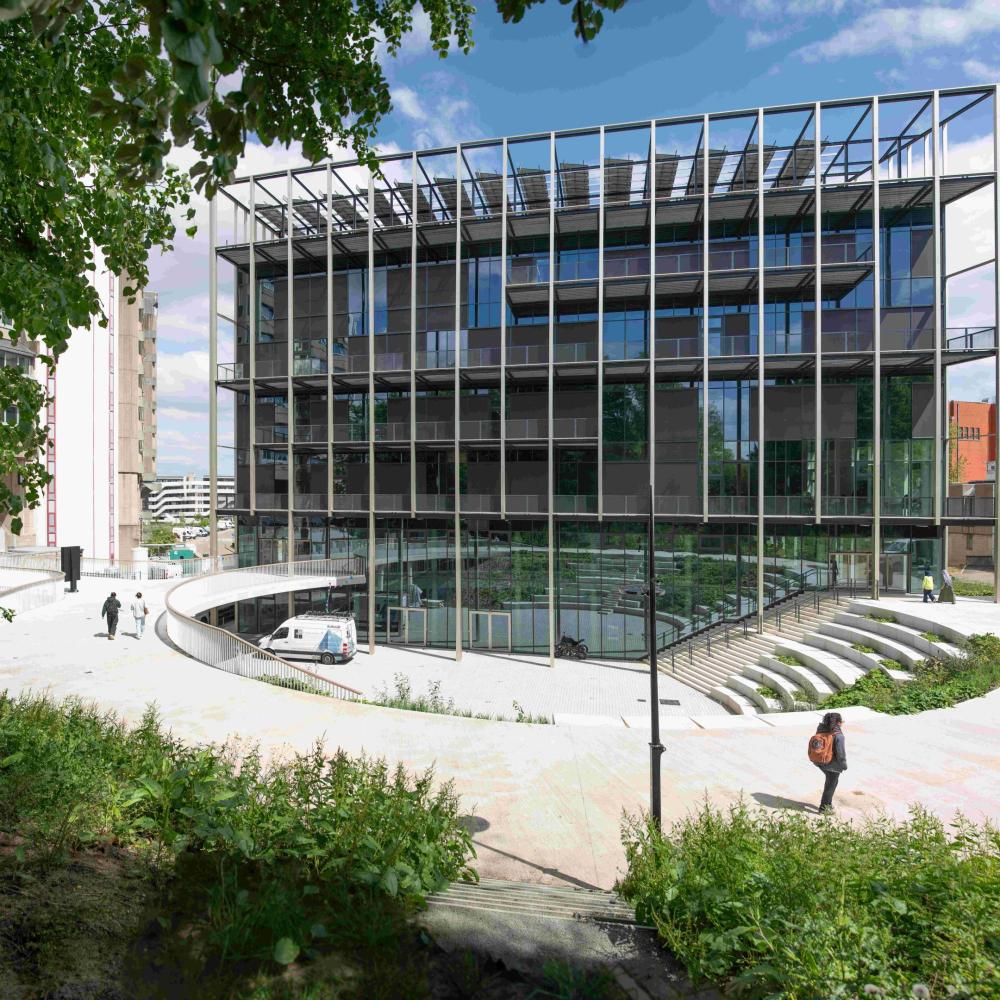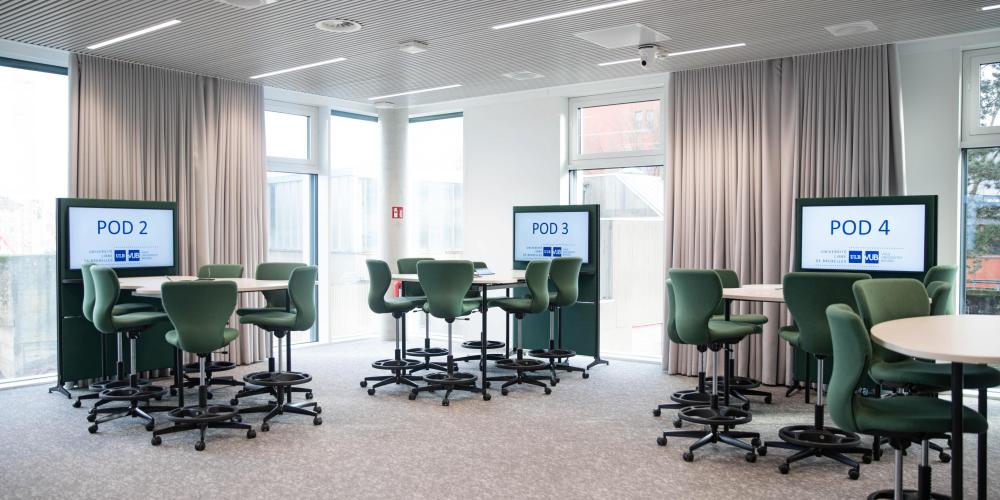
On 14 May, the brand-new Learning and Innovation Center (LIC) officially opened its doors, right on the border of the VUB and ULB campuses. This innovative learning environment allows students, professors and researchers to collaborate seamlessly, both on-site and online. Curious how that works in practice? Vice-Rector for Research Pieter Ballon, an LIC staff member and an enthusiastic professor share their experiences.
Book your study spot, meeting room or classroom at the LIC now
Pieter Ballon, Vice-Rector for Research at VUB
"The LIC has everything to become an intellectual beehive for our university"
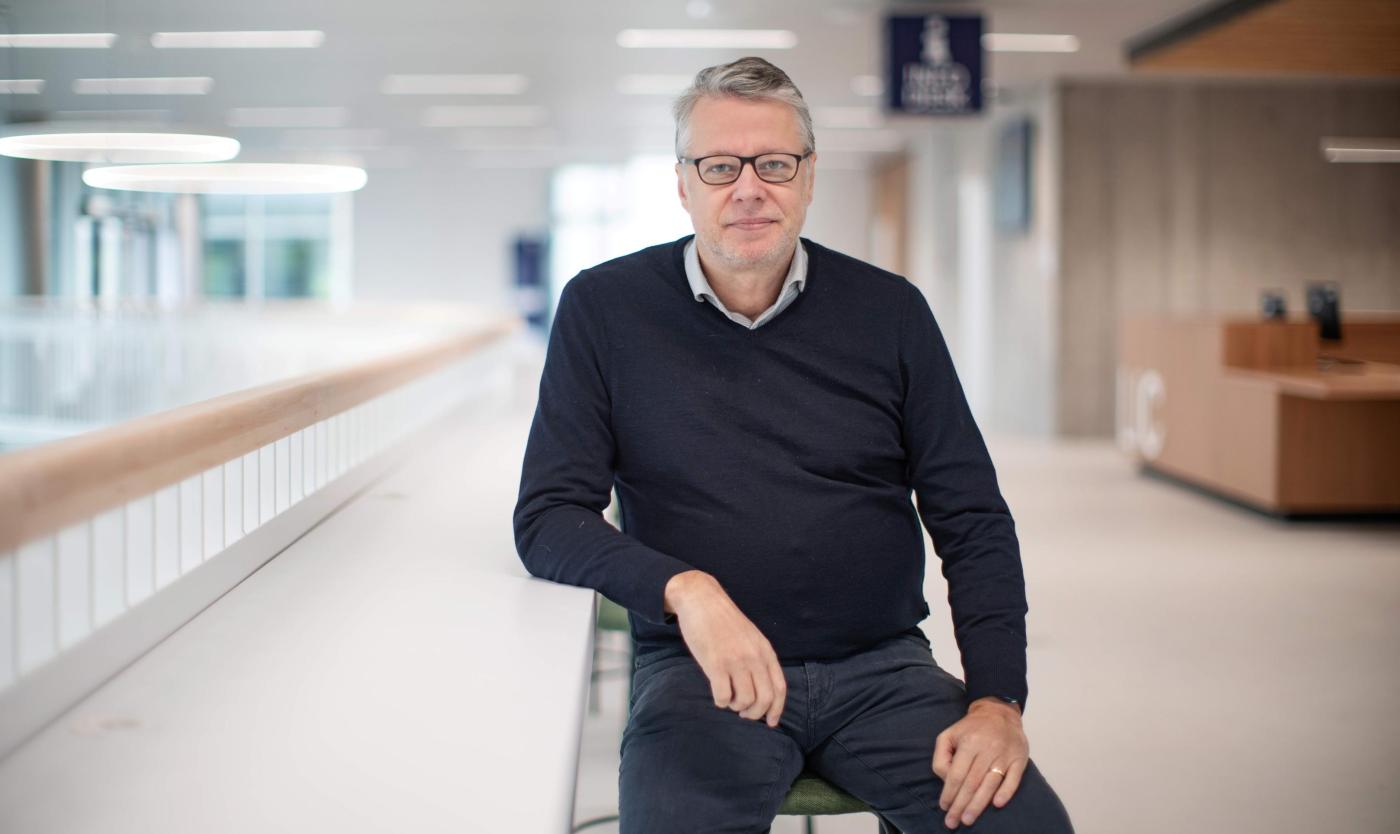
What makes the Learning and Innovation Center different from what you might expect from its name?
Pieter Ballon: “With a name like the Learning and Innovation Center, you might think that students only come there to learn and researchers only to innovate. That’s not the case. Researchers are constantly learning and innovating based on that learning. We expect students not only to learn but also to turn that into new ideas. Learning and innovation blend into each other here.”
Why is there a need for a building like the LIC for research?
“Research has become, above all, a matter of teamwork, where evaluation is interdisciplinary and increasingly happens in an international context. That requires an environment that reflects and facilitates this – a place where the virtual and physical worlds merge, and students and researchers sit together. I’m immensely proud of our LIC. The wildly enthusiastic videos flooding TikTok since the soft launch prove I’m not the only one. The American historian Shelby Foote once said, ‘A university is just a group of buildings gathered around a library.’ That’s such a spot-on quote. Like bees, we circle around the hive where we not only feed ourselves but also contribute. The LIC has everything to become such an intellectual beehive for our university.”
And that in partnership with the ULB.
“We’ve never lost sight of our parent university. The VUB is connected to the Flemish universities and internationally as well, but our bond with the ULB has always remained. We’re now making that bond more physical, too. We recently opened the Usquare campus, home to wonderful collaborative projects such as the Institute of Advanced Studies, where fellows from around the world come together in a sort of virtual-physical space. There’s also a Citizen Science hub where members of the public are actively involved. We’re doing the same in the LIC. In this way, we strengthen each other and position ourselves as hubs in a diverse and dynamic network.”
How does the LIC aim to strengthen its ties with the corporate world?
“It’s an innovation center where a broad range of activities and people come together. These often relate to science and technology, particularly in STEM research, tied to our exact sciences and engineering disciplines. That’s precisely the kind of research where the interface with the business world becomes especially valuable. At the VUB, we’re developing a series of incubators to support start-up activities, and we have labs and so-called core facilities where we want to involve industry more actively. For that, you also need a central meeting and reception space that’s appealing enough to reflect that innovation potential. We hope we’ve found that in the LIC. But it’s not just about exact sciences and engineering. We certainly don’t lose sight of other disciplines – they, too, can make full use of the LIC. In addition, we want to radiate that blend of learning and innovation through the campus library in Jette and the current central library in Etterbeek, which we’re transforming into the HUB – the Humanities Library.”
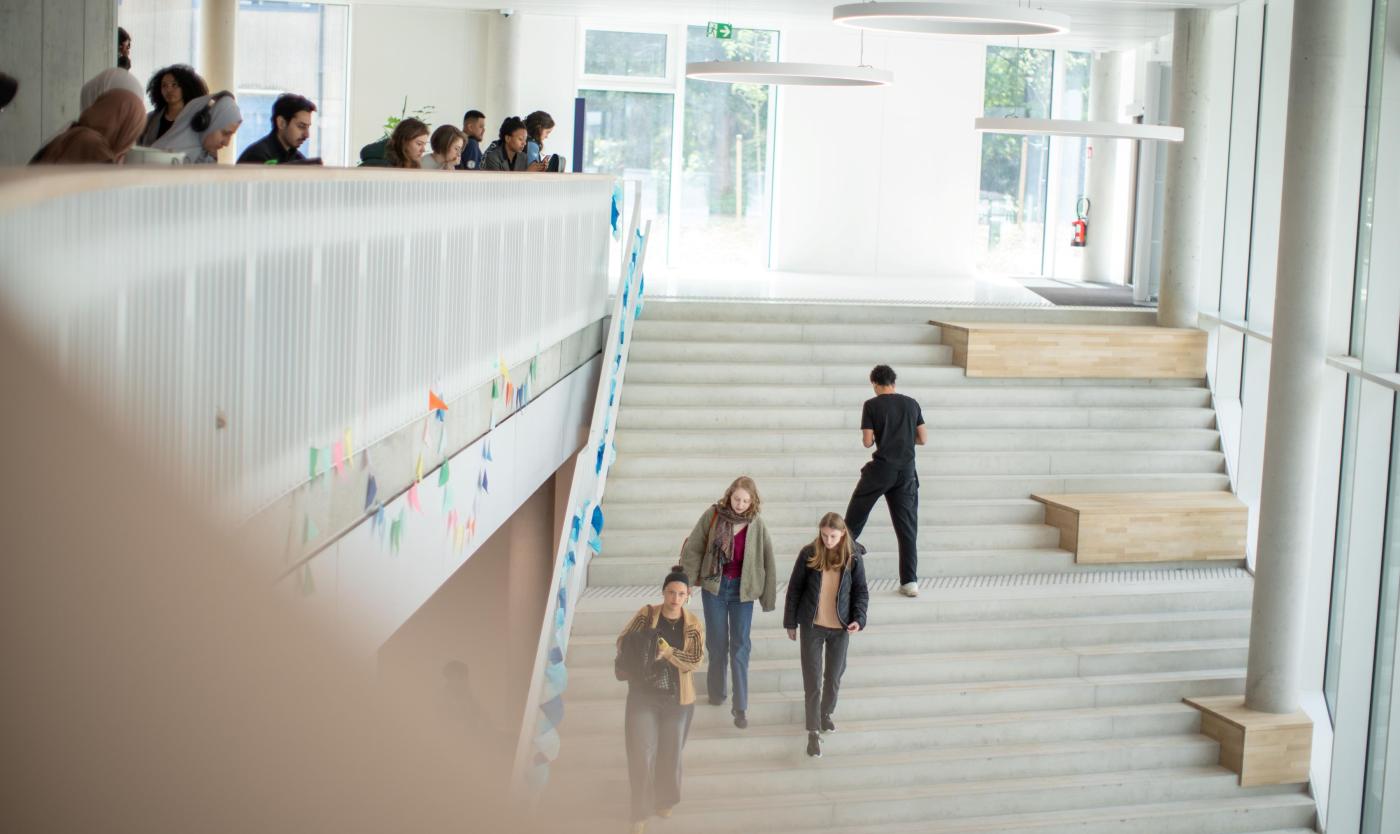
The LIC is an academic hub where people and activities come together.
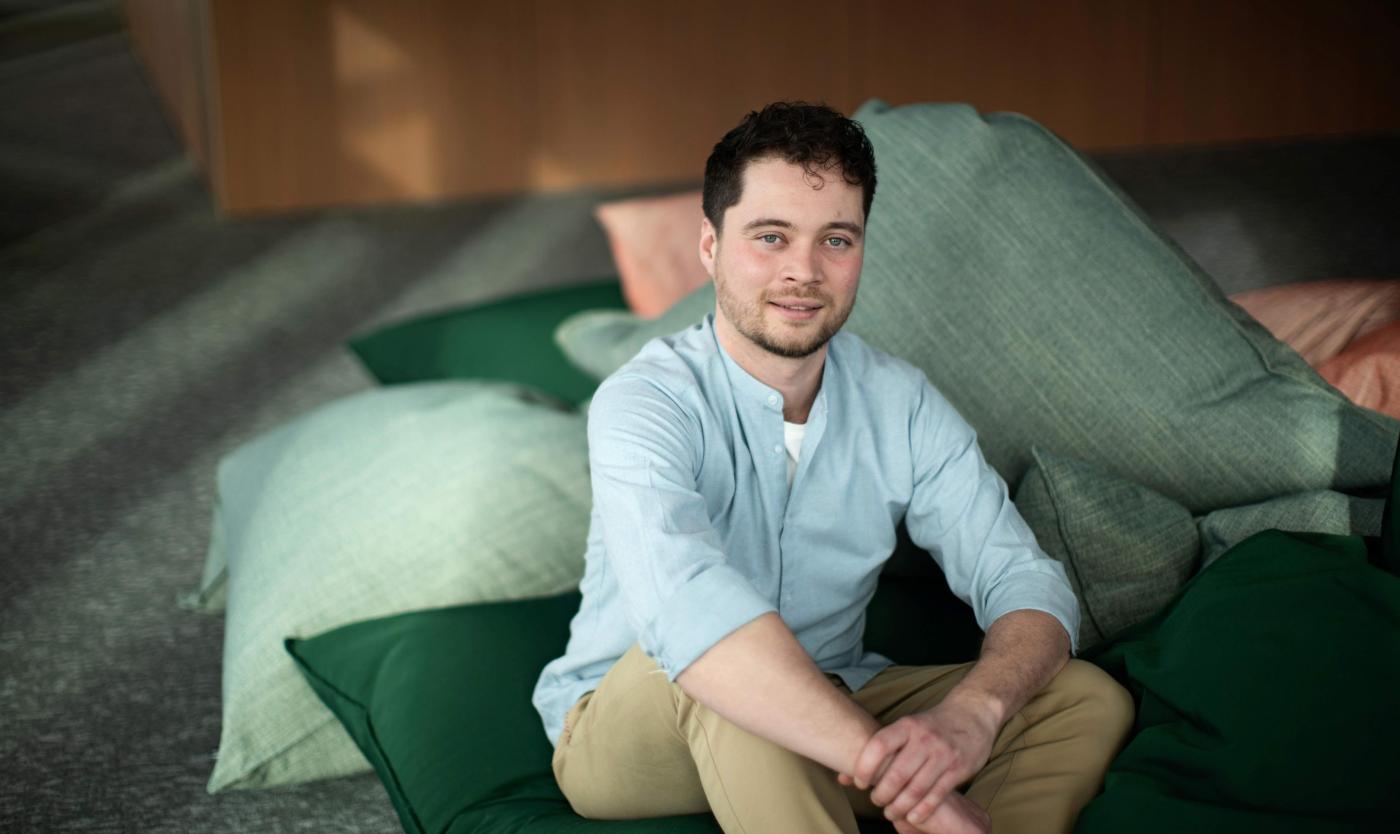
Bas Van Lith, Communications, Events, and Innovation Advisor at the LIC.
"The core values of the LIC are openness, informality, and flexibility - These will also be our way of working"
Isn’t the LIC primarily a building for students?
Bas Van Lith: Indeed, the majority of users will be students. However, the infrastructure is designed for the entire VUB and ULB community, and also for external users. We aim to facilitate this well. For example, there's startLAB.Brussels, a VUB initiative focused on entrepreneurship, where I see many opportunities for collaboration. It's very interesting to bring young entrepreneurs and science together to foster innovative ideas. I’ve given a few tours of the building, and I’ve noticed a strong demand for meeting rooms, spaces to connect, and areas for international collaboration from a distance. The LIC meets many of these needs.
The core values of the LIC are openness, informality, and flexibility. This will also be our way of working. As we move forward, we remain open to all questions and will learn from what works and what doesn’t.”**
How innovative is the LIC?
“We have several spaces where teaching can be done in new ways, with plenty of technology available for small group work and/or hybrid collaboration. The LIC brings people together in an innovative meeting structure. There are many open spaces, and the layout of the meeting rooms is creative and informal, encouraging people to interact in new ways.
The LIC also provides a fantastic platform for researchers to connect science with society. It would be great to use the LIC to strengthen VUB’s public program. We also offer a space to foster innovative ideas, such as hackathons and seminars. Eventually, we aim to become a knowledge hub to bring 21st-century skills closer to students. In the Immersive Room, for example, we can simulate lab environments and panoramas through 360° projections. We invite everyone to come by and experience for themselves how the LIC can be of service.”
How can you book a space?
“To book meeting rooms, collaboration spaces, and individual study spots, we use the Roamer X app. This app is crucial as it also serves as access to the LIC. The building is equipped with speed gates, similar to public transport. Staff and students can use the app to gain access. For bookings, you can also visit our website. If you have more complex booking questions, feel free to contact us at lic@vub.be, and we’ll guide you as best we can.”
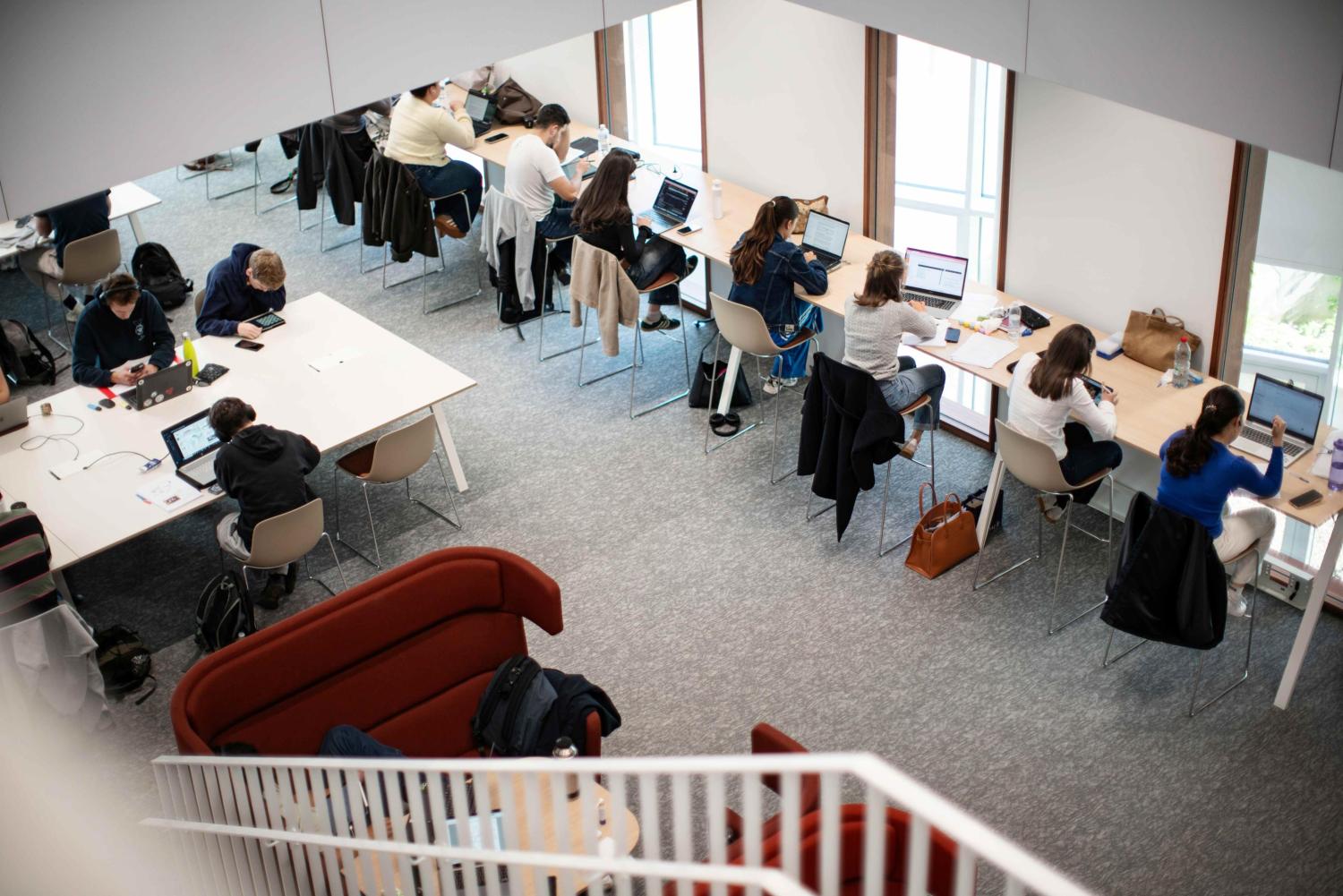
The majority of users will be students, but the entire VUB and ULB community is welcome.
Liesbeth De Donder, Professor in Educational Sciences
"Meeting in a different way encourages engagement; people become more active, think critically, and contribute"
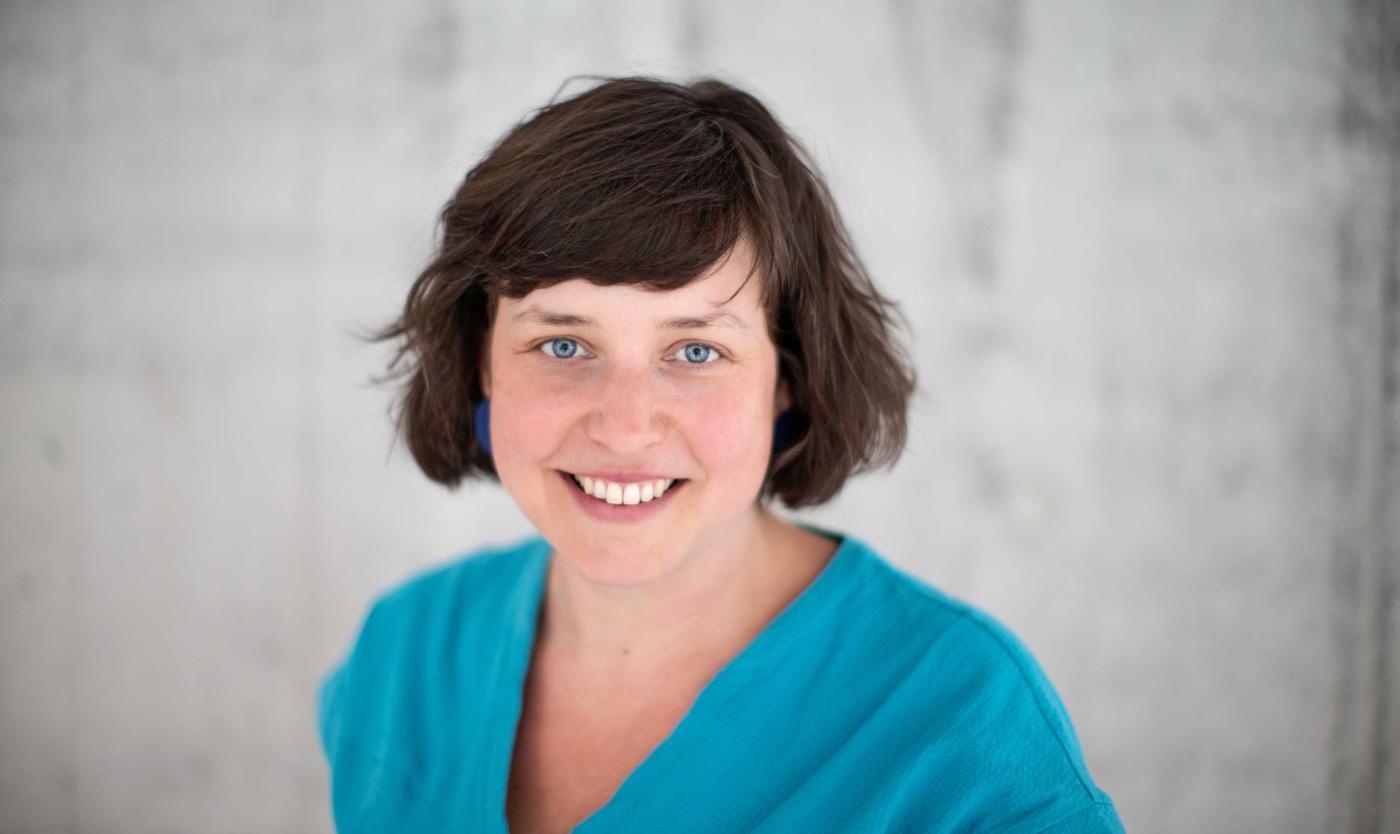
What is the added value of the LIC for your teaching?
Liesbeth De Donder: "Recently, I had a very inspiring presentation about the LIC at the faculty council. It made me, as a lecturer, really excited, and I immediately submitted a request for a teaching space. I teach for an entire semester, 13 weeks of two to three hours. However, once you deviate from this format, it becomes very difficult within the current system. For example, if I want to teach for four full days, it doesn’t fit well within the scheduling system of our regular classrooms. I hope to find more flexibility at the LIC."
"During their master’s thesis, students have a few sessions within a thesis seminar. Instead of spreading these out over the 13 weeks, I’ve already restructured it to have them meet for a full day each month, in a conference-style setting with various speakers and panel sessions. I see this fitting perfectly within the LIC."
"The second aspect I’m looking for in the LIC is breaking away from individual work on the thesis by encouraging students to collaborate in small groups, providing peer support. You can't do that in a traditional classroom with fixed seating. In the LIC, there are coworking spaces where they can work in groups of four, each with a large screen to share and provide feedback. It's ideal for this."
"Earlier this year, our research group had an exchange with a group from the University of Antwerp. Instead of sitting around a table for half a day, we organized speed dating sessions and proposed statements. That’s another form of meeting, but one that stimulates engagement — people are more active, think critically, and contribute. I look forward to organizing such meetings in the LIC."
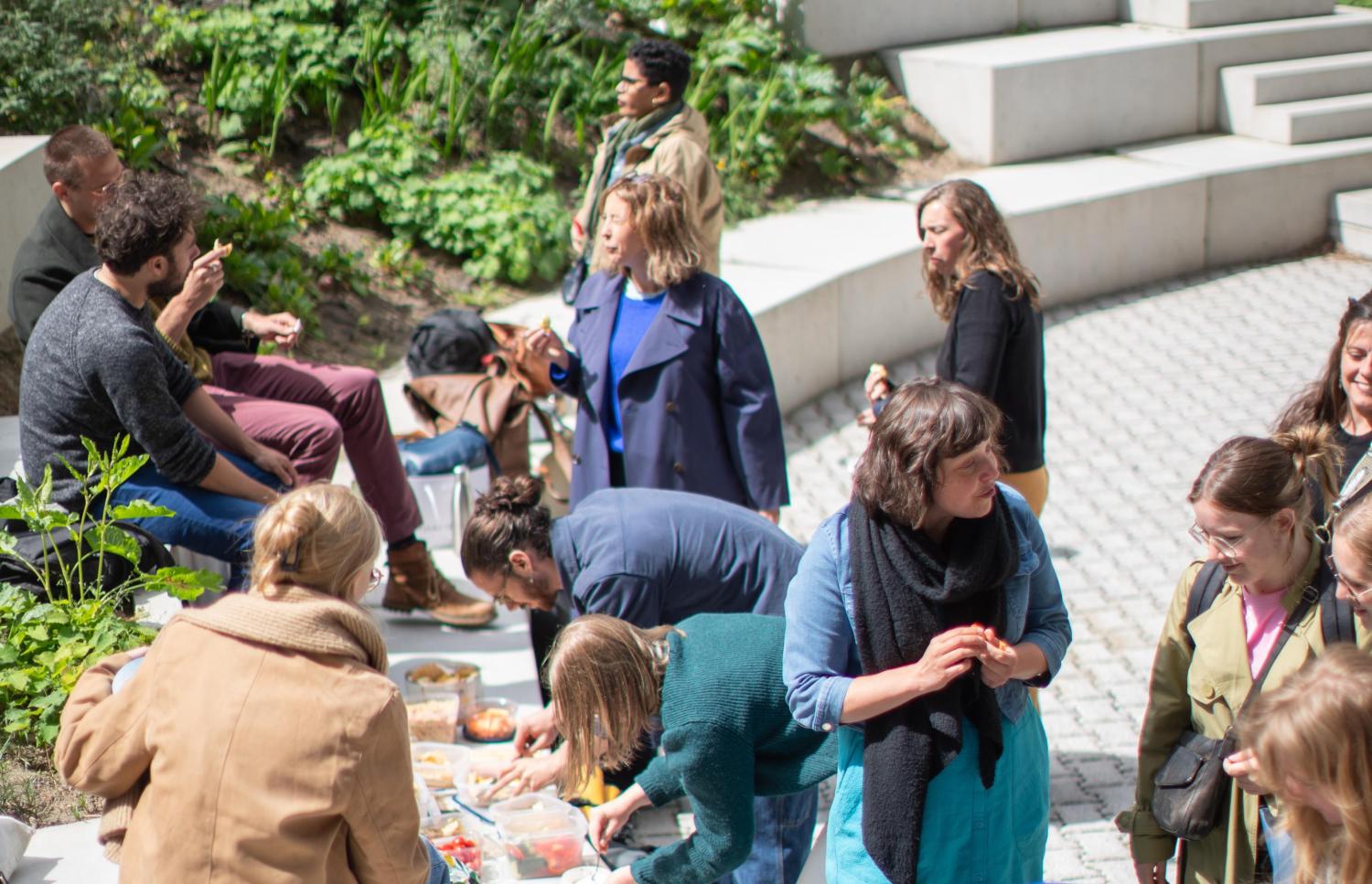
Professor Liesbeth De Donder with some students in the green atrium of the LIC.
A glance across the campus boundary

Bruno Leclercq, Director of the Library and Scholarly Information Service at ULB
"Thanks to the LIC, the teacher evolves into a learning process facilitator who uses technology to stimulate critical thinking and curiosity"
How is the LIC a catalyst for educational innovation?
"The LIC offers next-generation classrooms equipped with technology that supports active and interactive learning. Think modular spaces, interactive screens, and digital collaboration tools. Thanks to this infrastructure, teachers can implement innovative teaching methods, from 'learning by doing' to flipped classrooms and project-based learning.
But technology is not everything. Equally important is the support from educational experts. They assist teachers in thoughtfully using these tools, enabling students to learn more independently and be more engaged. The LIC thus fosters a new educational culture where the teacher evolves into a learning process facilitator who sparks critical thinking and curiosity."
